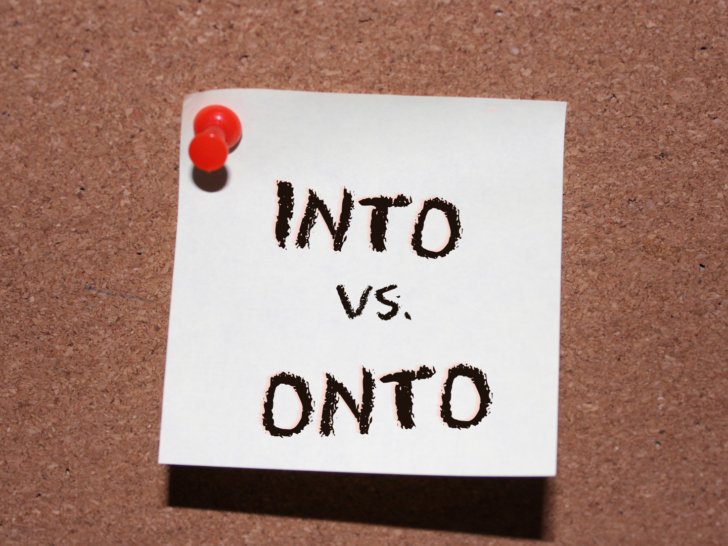Have you ever paused mid-sentence, wondering whether to use “into” or “onto”? These seemingly interchangeable prepositions often leave us feeling unsure, unsure about the nuances that differentiate them. But fear not, dear reader! This article delves into the depths of these two prepositions, revealing their subtle yet powerful distinctions.

Image: www.cuemath.com
Understanding the correct usage of “into” and “onto” not only elevates your writing but also unlocks a deeper appreciation for the precision of language. After all, communication is a delicate dance between meaning and accuracy, and choosing the right prepositions adds elegance and clarity to our expressions.
The Deep Dive: Unraveling the Mysteries of “Into” and “Onto”
Let’s embark on a journey to dissect these prepositions and understand their unique qualities. At their core, both “into” and “onto” express movement; however, they signify different types of movement:
- “Into” implies movement inside something. Imagine yourself entering a room, stepping into a pool, or diving into a book. These actions depict a transition from the outside to the interior of a space.
- “Onto” suggests movement on top of something. Envision placing a book onto a table, stepping onto a stage, or throwing a blanket onto a bed. These actions indicate a shift from one surface to another.
Concrete Examples for Clarity
To further clarify their usage, let’s explore some practical examples:
“Into”:
- The cat jumped into the box. (The cat moved from outside the box to inside the box.)
- He poured the water into the glass. (The water moved from outside the glass to inside the glass.)
- She looked into the mirror. (She observed something within the mirror, not on its surface.)
“Onto”:
- The bird landed onto the branch. (The bird moved from the air to the top of the branch.)
- He put the cake onto the plate. (The cake moved from one surface to another.)
- She stepped onto the platform. (She moved from one level to another.)
The Importance of Precision
While “into” and “onto” may seem interchangeable at first glance, their distinct meanings add precision and clarity to our language. Imagine this scenario:
A writer describes a character stepping into a room, but upon closer examination, we realize they meant to convey that the character entered. The word “into” might not accurately portray the intended meaning. This subtle difference in prepositions can alter the entire picture, highlighting the significance of choosing the right word.

Image: allthedifferences.com
The Power of Prepositions: A Reflection of Our World
Beyond their grammatical significance, prepositions reveal the intricate connections between objects and spaces. They illustrate movement, direction, and the relationships between things. They paint vivid pictures with their subtle nuances, allowing us to understand the world in a more profound way.
Expert Insights: A Guide to Mastering the Prepositions
Mastering the prepositions “into” and “onto” requires a keen eye for detail and an appreciation for the nuances of language. Here are some expert tips to help you sail through these linguistic waters with confidence:
- Visualize the Action: Whenever you encounter “into” or “onto,” visualize the action being described. This will help you determine the appropriate preposition.
- Consider the Context: The context of the sentence will often provide clues about which preposition is most appropriate.
- Practice Makes Perfect: The best way to master any skill, including the usage of prepositions, is through continued practice.
Differences Between Into And Onto
Final Thoughts: Embracing the Nuances of Language
As we conclude our journey through the fascinating world of “into” and “onto,” we realize that precision in language is not merely a matter of grammar but a reflection of our understanding of the world. By choosing the right prepositions, we can express our thoughts with clarity and elegance, enriching our communication and fostering deeper connections.
So, dear reader, continue exploring the intricacies of language, embrace the nuances of prepositions, and let your words flow freely, infused with meaning and accuracy.

:max_bytes(150000):strip_icc()/OrangeGloEverydayHardwoodFloorCleaner22oz-5a95a4dd04d1cf0037cbd59c.jpeg?w=740&resize=740,414&ssl=1)




